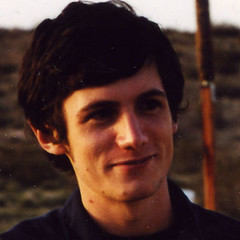The first Pranks book (1987) is a potential world shaker; if approached at the right time by a suitably open mind, its tales of imaginative tweaking of perceived reality—through elaborate ruses, pointless stunts, pre-caller-ID phone shenanigans, etc.—present a truly alternative way of living in which play is as highly valued as work, and a person can negotiate their universe on their own terms. I don't think I've ever felt laughter build so organically than when reading Boyd Rice's tales of suburban malfeasance, which I consider classics of American humor. The range of interviews in the 1987 volume nipped neatly between political agitators, performance artists, terrorists and troublemakers, offering innumerable worm holes through which one could approach prank nirvana. Inevitably, when reviewing the sequel to a beloved book, the original looms large. Pranks 2 is a bit smaller and more structured, with the interviews filed under Culture Hacking (Jihad Jerry, Jello Biafra), Groups (Suicide Club, Billboard Liberation Front), On-Line Satire (Frank Discussion), Comedy (Paul Krassner, Margaret Cho), and Art As Prank (John Waters, Ron English, SRL). Vale seems disinclined to edit the conversations, which sometimes wind dangerously far from the book's supposed subject. (Does Julia Solis' urban adventuring league really belong here? Or Margaret Cho, who flatly admits she's no prankster, despite her support of Reverend Al's delightful Art of Bleeding activities?) Nonetheless, most of the featured subjects and organizations do serious and provocative work, and it's instructive to learn more about their aims and activities, legal battles and triumphs. Who knew that Lydia Lunch's hobby is getting cops to pose for photos? As a longtime member of the apostate L.A. branch of the Cacophony Society, I was fascinated to learn more about its origins in the S.F. Suicide Club, yet found that Rev. Al's interview about Cacophony itself scarcely reflected my own experiences (not surprising, since Al organized/attended hundreds more events than I did). One thing this sequel makes very clear is how much the world and communication has changed in twenty years, and how pranksters have had to shift with the times to continue their activities. The personal stakes in the US and UK are so much higher now, it's hardly surprising that political and idealistic pranksters have taken the fore, but I find I miss the surrealism of phantom raccoons in grocery stores and dayglo guns tossed into Disneyland tableaux very much. That world is gone now, or if not gone, much harder to visit—except in imagination, which both volumes of Pranks feed. (That's an Amazon link below, but consider buying direct from the RE/Search website, as they were among the small publishers hit by the Publishers Group West bankruptcy.)
Category: cacophony society
Peter “Mr. Outerspace” Geiberger RIP
Peter Geiberger, once one of our most promising young troublemakers, artists and social misfits, a creature of great natural intelligence, charm and wit, a musician, visual artist, writer and prankster, died on Wednesday.
I regret that was not able, when I had more influence over him than most, to convince him that dabbling in heroin was stupid. Of course the drug became huge in his life, stole many of his friendships, his time and imagination, and eventually killed him. He dies owing me $50 and a lobster dinner, and the life he ought to have lived instead of the one he did.
I will remember the brilliant 17-year-old with the pre-Raphaelite features who dazzled the tired old Cacophony Society when he began attending events nearly a decade ago, his fearless ability to grab a guitar or some hideous prop and make himself the center of attention, how sympathetic a listener he was when needed despite his snarky ways, how happy he was when drawing, and his essential sweetness.
I will also remember the memorial service I helped organize after Peter’s death was faked on Hallowe’en 2000, as part of the conclusion of the grand Cacophony Society prank. It is all quite surreal, but at least Peter had that rare opportunity to attend (or at least hear about) his own funeral, and receive many posthumous accolaydes from people who loved him.
Goodbye, dear Peter, always in so much pain, now free of that at least.
~
Postscript: I have put Peter’s two delightful features for Scram online: his advice for How to be a Badass (which explains his entire personality) and his history of the black velvet painting tourist market. Around this time (1999) he published his own little zine, Scrum, as well.

